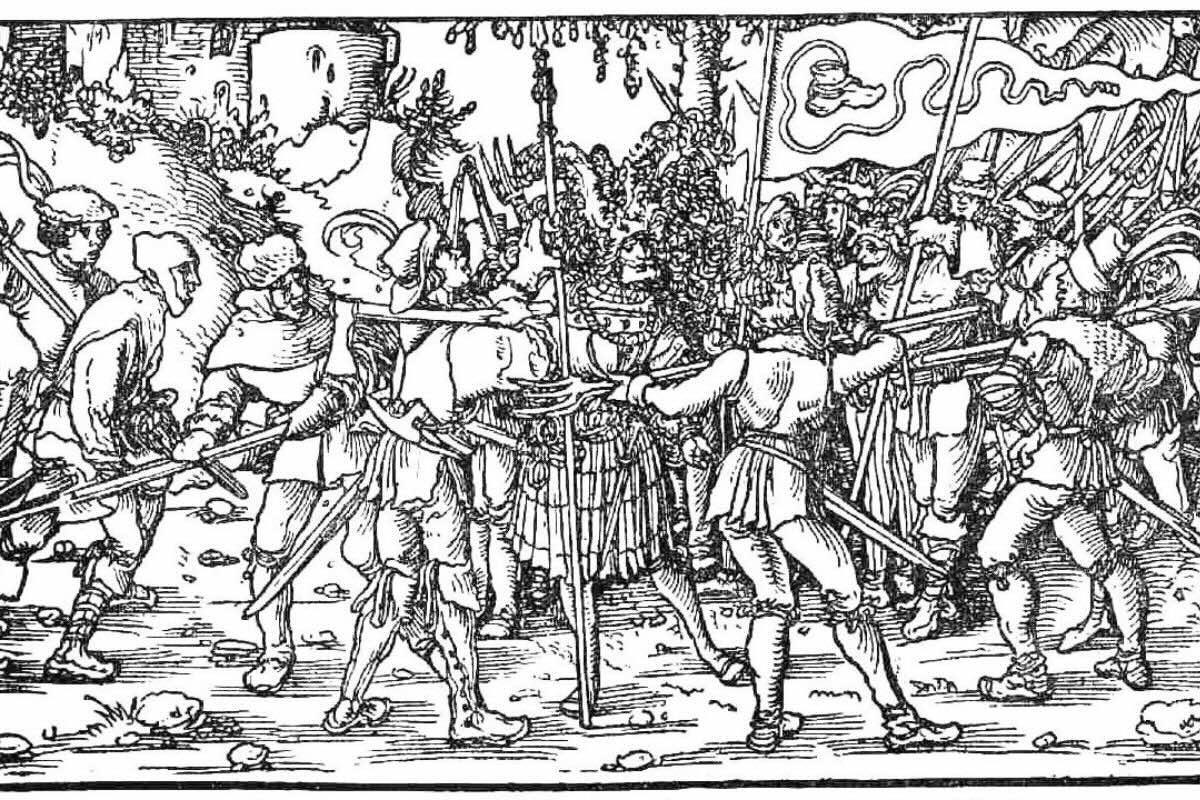
The Bundschuh Movement was a series of peasant uprisings in southwestern Germany during the late 15th and early 16th centuries. These revolts were driven by widespread discontent with feudal oppression, high taxes, and the lack of political representation. The term "Bundschuh" refers to the laced shoe worn by peasants, symbolizing their unity and struggle against the ruling class. Despite their efforts, the movement faced brutal suppression, yet it laid the groundwork for future peasant revolts, including the German Peasants' War. Understanding the Bundschuh Movement offers insight into the early struggles for social justice and equality in Europe.
Key Takeaways:
- The Bundschuh Movement was a series of peasant uprisings in Germany driven by economic hardship and social injustice, inspiring future revolts and contributing to the decline of feudalism.
- Peasants and leaders of the Bundschuh Movement used religious rhetoric, cultural symbols, and grassroots activism to fight for social justice, leaving a lasting legacy in German history.
Origins of the Bundschuh Movement
The Bundschuh Movement was a series of peasant uprisings in southwestern Germany during the late 15th and early 16th centuries. These revolts were driven by economic hardship, social injustice, and a desire for reform.
- The name "Bundschuh" comes from the laced boot, a symbol of peasant solidarity and resistance.
- The first Bundschuh uprising occurred in 1493 in the region of Alsace.
- The movement was primarily composed of peasants, craftsmen, and small farmers.
- Economic factors like high taxes and feudal dues fueled the discontent among the peasants.
- Social inequality and the abuse of power by local lords were also significant motivators.
Key Figures in the Bundschuh Movement
Several leaders emerged during the Bundschuh uprisings, each playing a crucial role in organizing and inspiring the rebels.
- Joss Fritz, a former soldier, was one of the most prominent leaders of the Bundschuh Movement.
- Fritz organized the 1513 Bundschuh uprising in the region of Bruchsal.
- Another notable leader was Hans Boheim, also known as "Pfeifer von Niklashausen," who led a religiously inspired revolt in 1476.
- Many leaders were executed or imprisoned, but their ideas continued to inspire future uprisings.
- The movement's leaders often used religious rhetoric to rally support and justify their actions.
Major Uprisings and Their Outcomes
The Bundschuh Movement saw several significant uprisings, each with varying degrees of success and failure.
- The 1493 uprising in Alsace was quickly suppressed, and its leaders were executed.
- In 1502, another revolt took place in the region of Breisgau, but it too was crushed.
- The 1513 uprising in Bruchsal, led by Joss Fritz, was one of the most well-organized but ultimately failed.
- The 1517 Bundschuh uprising in the region of Lehen was also unsuccessful.
- Despite their failures, these uprisings laid the groundwork for the larger German Peasants' War of 1524-1525.
Impact on German Society and Politics
The Bundschuh Movement had a lasting impact on German society and politics, influencing future revolts and reforms.
- The movement highlighted the deep social and economic inequalities in German society.
- It exposed the weaknesses of the feudal system and the need for reform.
- The Bundschuh uprisings inspired the German Peasants' War, a much larger and more widespread revolt.
- The movement also influenced the Reformation, as many peasants saw Martin Luther's ideas as aligning with their own demands for justice.
- The Bundschuh Movement contributed to the eventual decline of feudalism in Germany.
Cultural and Religious Aspects
Religion and culture played significant roles in the Bundschuh Movement, shaping its ideology and methods.
- Many rebels saw their struggle as a holy war against injustice and corruption.
- Religious leaders like Hans Boheim used sermons and religious gatherings to mobilize support.
- The movement's use of the Bundschuh symbol reflected a sense of unity and shared purpose among the peasants.
- Songs, poems, and other forms of folk culture were used to spread the movement's message.
- The Bundschuh Movement's religious overtones helped to legitimize their cause in the eyes of many peasants.
Legacy of the Bundschuh Movement
The Bundschuh Movement left a lasting legacy, influencing future social and political movements in Germany and beyond.
- The movement's emphasis on social justice and equality resonated with later revolutionary movements.
- It demonstrated the potential power of organized peasant resistance.
- The Bundschuh uprisings are remembered as early examples of grassroots activism.
- Historians view the movement as a precursor to the larger and more successful revolts of the 16th century.
- The Bundschuh Movement remains a symbol of the struggle for justice and equality in German history.
Final Thoughts on the Bundschuh Movement
The Bundschuh Movement was a significant part of late medieval German history. It highlighted the struggles of peasants against feudal oppression. These uprisings, though ultimately unsuccessful, laid the groundwork for future revolts and reforms. The movement's leaders, like Joss Fritz, became symbols of resistance and courage. Their efforts, though crushed, inspired later movements like the German Peasants' War. Understanding these historical events helps us appreciate the long, arduous journey toward social justice and equality. The Bundschuh Movement reminds us that even in the face of overwhelming odds, the fight for a fairer society is always worth pursuing. This movement's legacy lives on, teaching us about resilience and the power of collective action.
Frequently Asked Questions
Was this page helpful?
Our commitment to delivering trustworthy and engaging content is at the heart of what we do. Each fact on our site is contributed by real users like you, bringing a wealth of diverse insights and information. To ensure the highest standards of accuracy and reliability, our dedicated editors meticulously review each submission. This process guarantees that the facts we share are not only fascinating but also credible. Trust in our commitment to quality and authenticity as you explore and learn with us.
